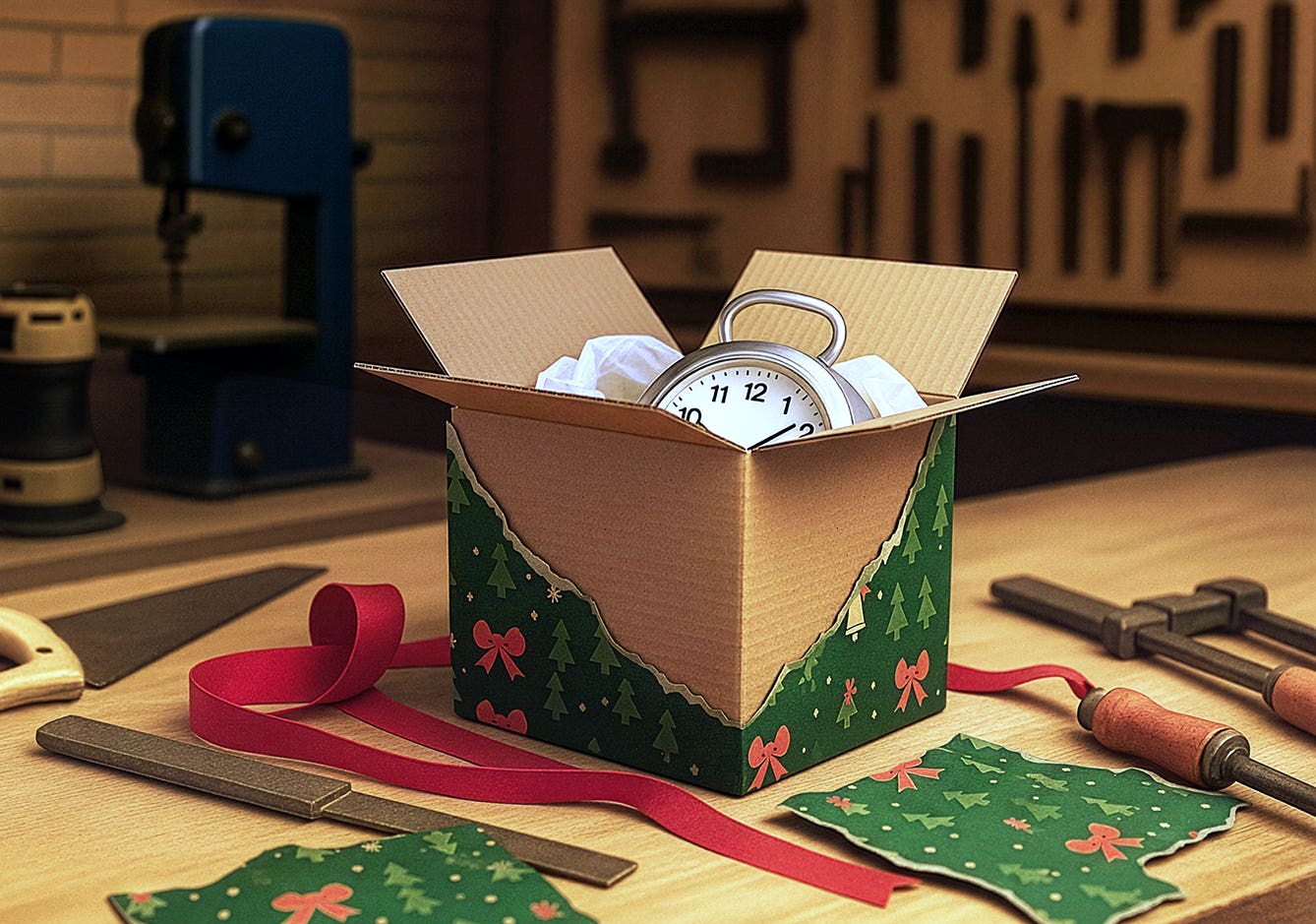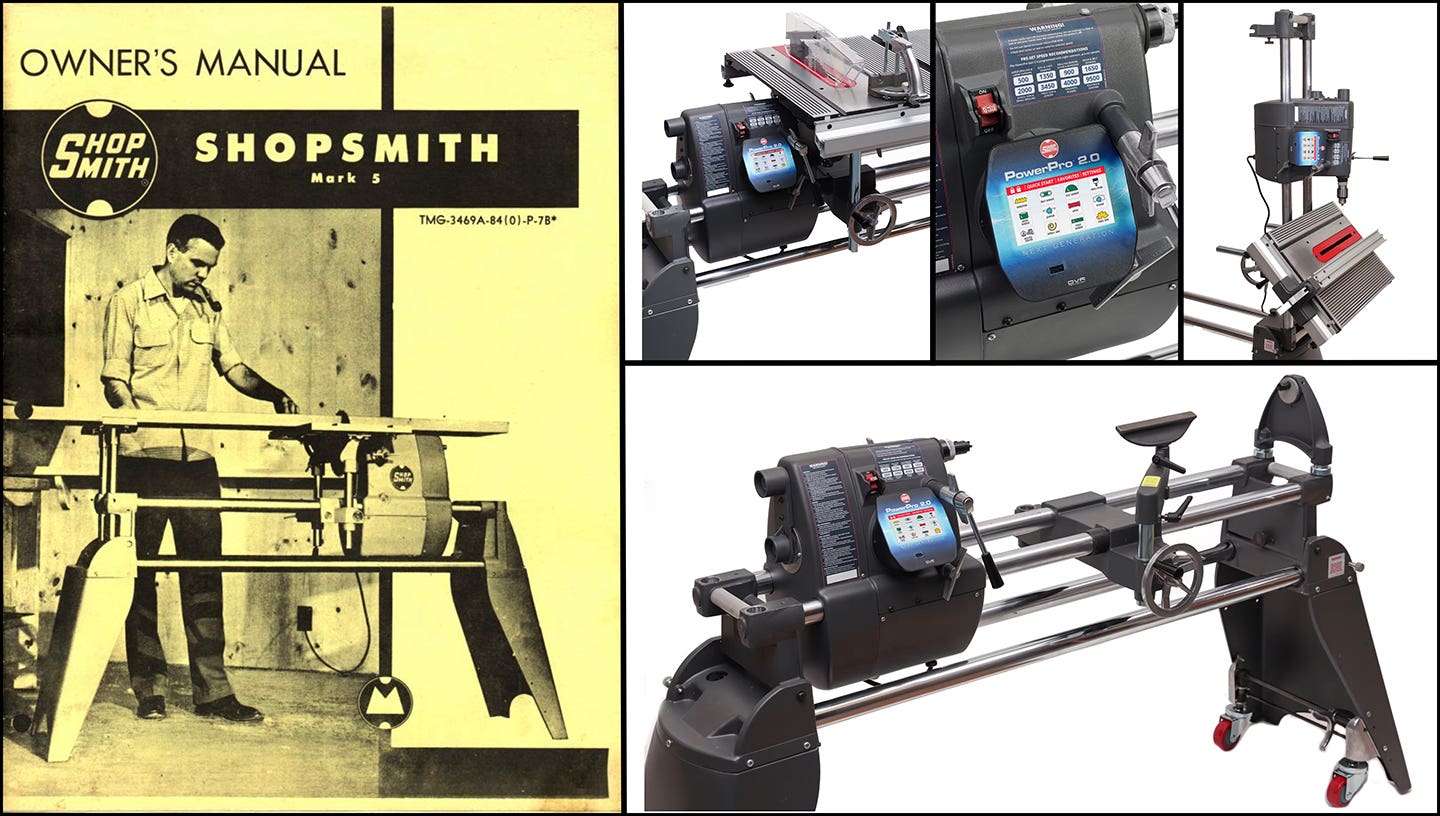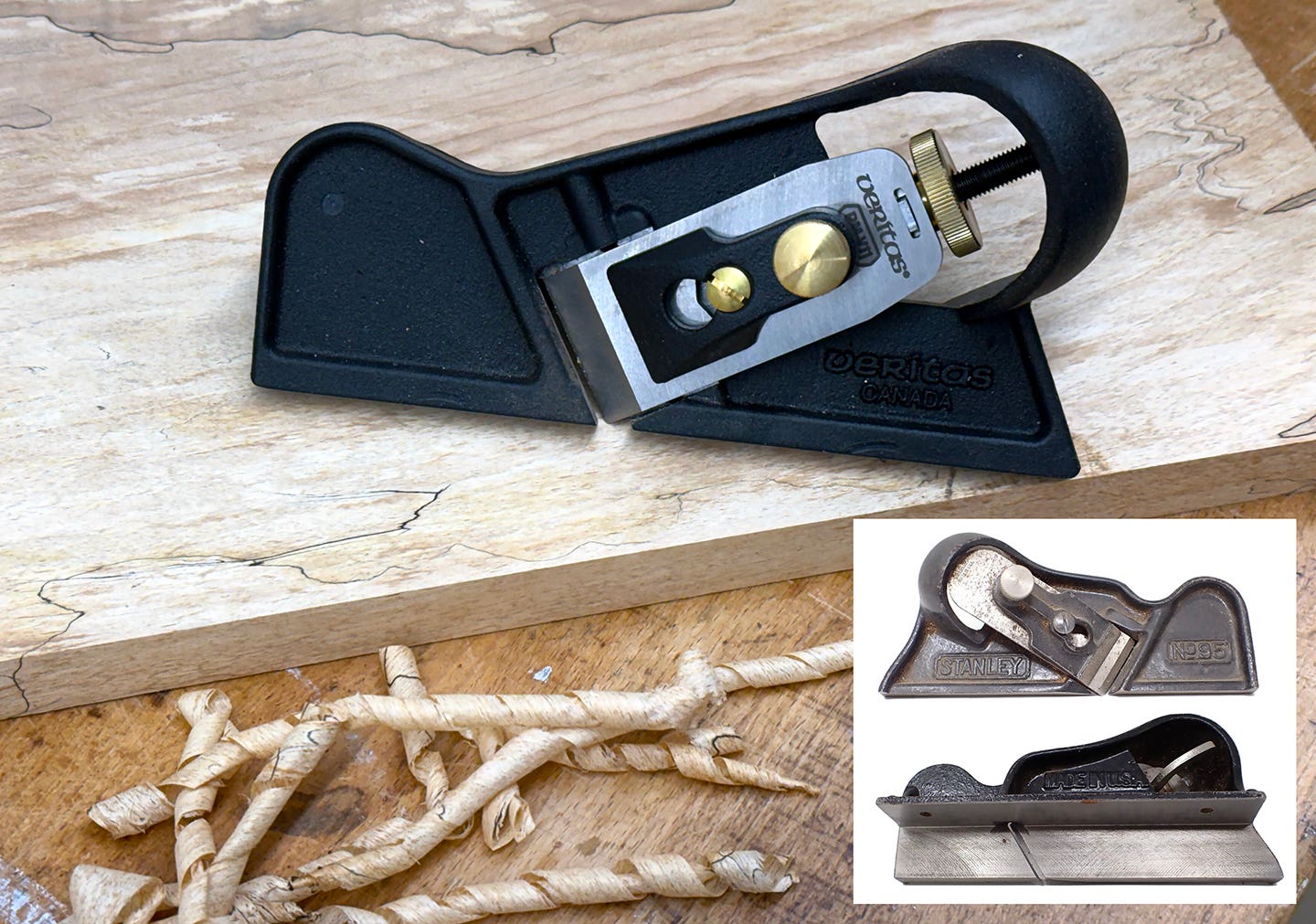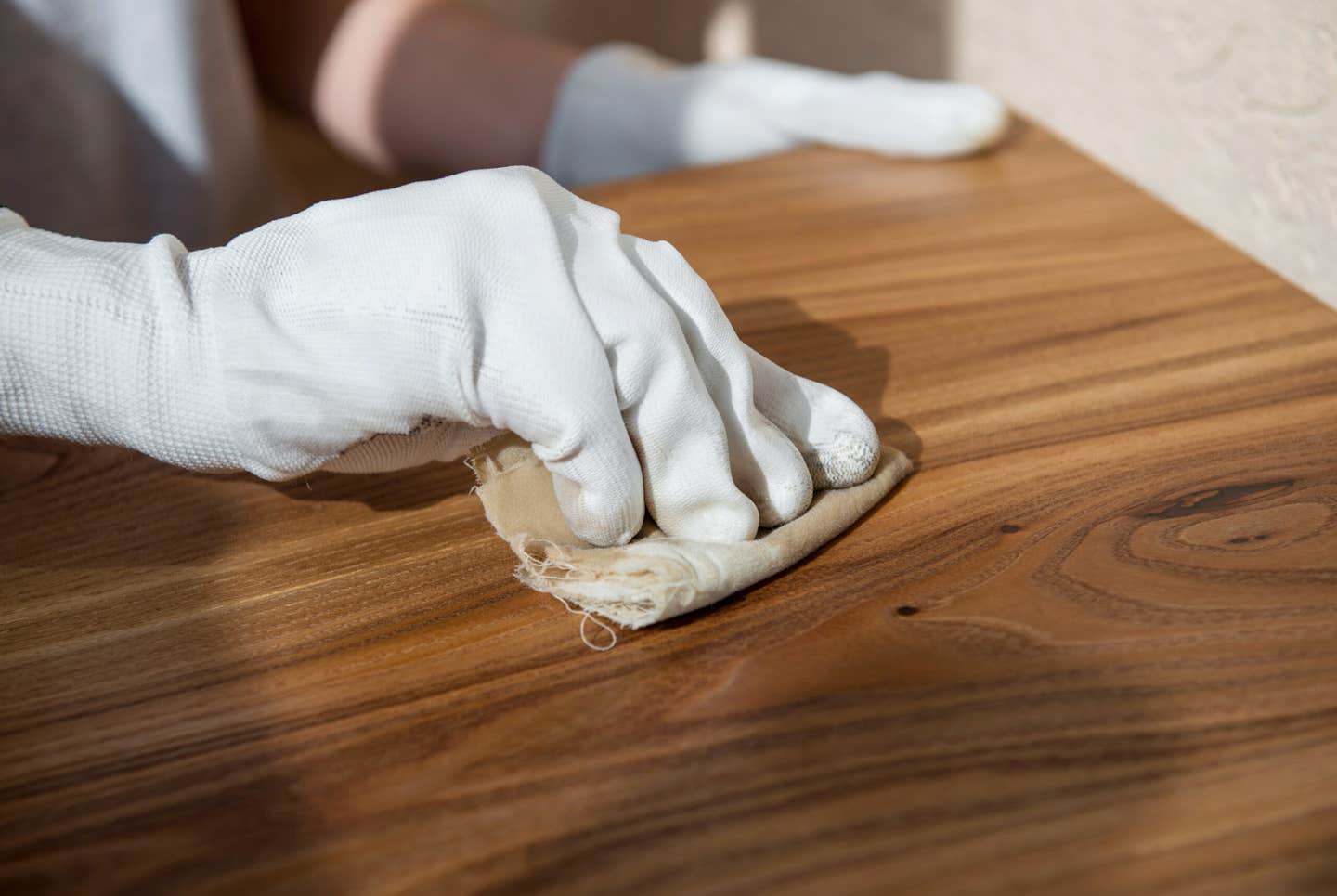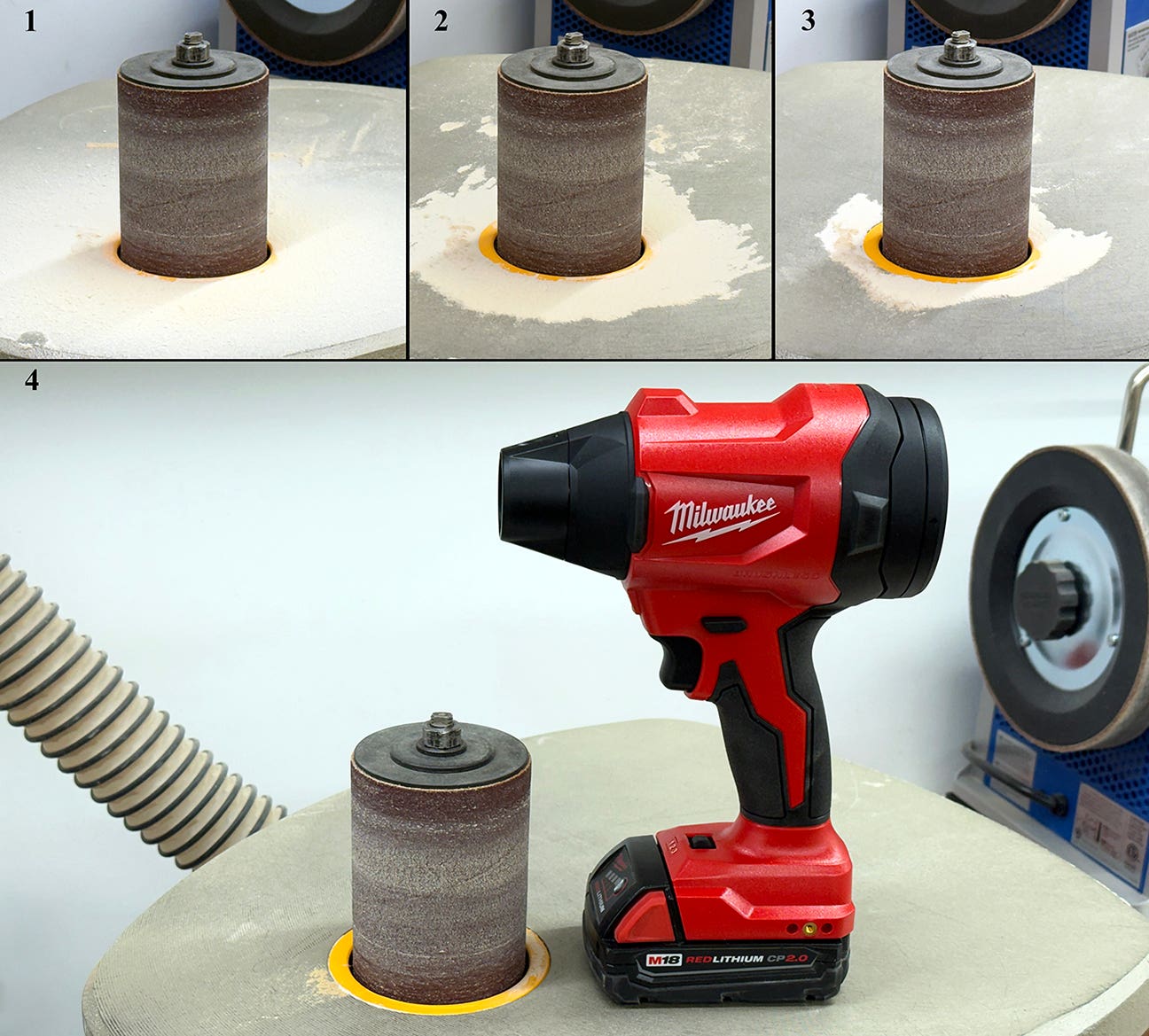An off-the-wall idea for making more space
The need for table space varies in most home environments. More tabletop space is needed on social occasions such as dinner parties or meetings; less when fewer occupants of the…
The need for table space varies in most home environments. More tabletop space is needed on social occasions such as dinner parties or meetings; less when fewer occupants of the space are about. Even the need for workspace can be variable. With limited space, folding tables can provide desirable flexibility.
The four tables described in this article are constructed so that they can be hung in various spatial configurations. And because each table is different but all have patterns that appear to flow across neighboring tables, the number of potential patterns that the consumer can realize is surprisingly high.
Table construction is straightforward. Each table has a veneered top, in this case walnut and tamo ash. The walnut aprons are wide in the corners, but thinner in the middle. The extra width in the corners provides joint strength and sturdy anchorage for the leg brackets; the thinner middle provides convenient handholds to hang and retrieve the tables from the wall. The aprons are mitered on the ends and joined into a frame. The frame is rabbeted at the top edge to receive the tabletop. The four tapered legs for each table are walnut with 6” ash “feet.” The legs are joined to the inside of the aprons using off-the-shelf folding leg brackets.
The tables are a standard height of 28-1/2” when open. The legs fold under the top around the inside perimeter so each side of the table must be long enough to accommodate the full length of the leg plus bracket. The tabletops — 31-1/2” x 31-1/2” — are about as small as they can be and still accommodate the folding legs.
The hanging system
A system of French cleats was devised to make the tables secure on the wall, but simple to take down and put back. First, a bracket plate, approximately 10-1/2” x 10-1/2”, made from plywood with a strip of 1-1/2” thick pine glued across the front at the top and another at the bottom, was fabricated for each table. These rough bracket plates, screwed to the wall in four corners, are completely hidden by cabinet-like structures. It is these finished structures that are revealed whenever a table is removed from the wall.
The cabinet-like structures (12-1/2” x 12-1/2” x 3-5/8”) feature four walnut sides and a veneered front panel of walnut and tamo ash. The pattern on the front panel is of the same motif as the tabletops. A strip of walnut molding cut longitudinally at 45 degrees was glued to the top at the front of each cabinet-like structure to serve as the cleat to receive the table. The cabinets have no back so they can slip over the bracket plates and be secured with screws through the top and bottom.
To complete the system, four cleats configured in a square pattern were mounted on the underside of each table. These cleats were designed to slip easily over the 45-degree molding at the top front of the cabinets. In sum, this French cleat system consists of cleats on the underside of the table and at the top front of each cabinet. When the table is hung on the wall, one of the under-table cleats slips over the cleat on the wall hung cabinet. To take the table down, it is simply slipped past the cabinet cleat and removed from the wall.
Flexible esthetics
These hanging tables are beautiful and practical. They create an arresting focal point on the wall. The light colored tamo ash veneer appears to flow smoothly across table boundaries, creating a beautiful and organic overall graphic design. The linear grain pattern of the darker walnut background provides a warm, patterned mosaic background across tables. And each can be removed from the wall (leaving an attractive place holder) and the hidden legs unfolded. Tables can be set up in various configurations allowing for a variety of seating configurations when needed and no loss of valuable floor space when not needed.
The large number of design possibilities comes from several elements.
Uniqueness: No two tables are alike with respect to tabletop graphics (although they are identical in all other aspects). So putting Table A next to Table B yields a different organic graphic design from putting table A next to Table C.
Asymmetry: There is no symmetry in any of the individual tabletop graphics. So any rotation of table A next to Table B produces a new organic graphic design.
The emphasis on uniqueness and asymmetry is, in a sense, misleading. Getting the figure and background to appear to flow across tables actually requires both symmetry and similarity. First, the boundaries of the figure(s) at the edge of Table A must match the boundaries at the contiguous edge of Table B. This was met by constraining the graphic design of each tabletop to have figural elements in every corner. The boundaries of these elements where they cross table edges are exactly the same distance from each corner of the table on all corners on all tables. With this set of constraints, the figural elements match up across contiguous pieces.
Matching boundaries is not enough. There must also be continuity in the background and foreground materials across tables, i.e., no jarring change in grain direction or discontinuity of figure in the wood where the tables meet. To deal with this, the background veneer was configured in a sunburst pattern; the grain appears to fan out from a point in the center of each table. Since the walnut grain pattern on each tableside is identical within and across tables, there is a background match regardless of specific table or rotation.
Grain direction can be less important with the tamo ash. Its color is a striking contrast to the walnut background so the eye tends to put contiguous tamo elements together. Second, although the shapes on each tabletop are unique, they are all abstract, organic, curvilinear shapes that are plausible continuations of one another. Finally, the complex and irregular changes in grain direction and figure in this wood make it more difficult for the eye to distinguish changes in grain/wood pattern across tables.
A summing up
These pieces are versatile. They are at once décor and functional tables. And by storing conveniently on a wall when not in use, they optimize the use of space. But even when space is not a pressing issue, one can appreciate the earthy colors, grainy textures and varieties of figure reflected in these hanging tables. And they are designed to provide for a virtual kaleidoscope of interesting, organic, overall graphic designs on or off the wall.
Abraham Tesser is a furniture maker in Athens, Ga.
This article originally appeared in the December 2016 issue.


